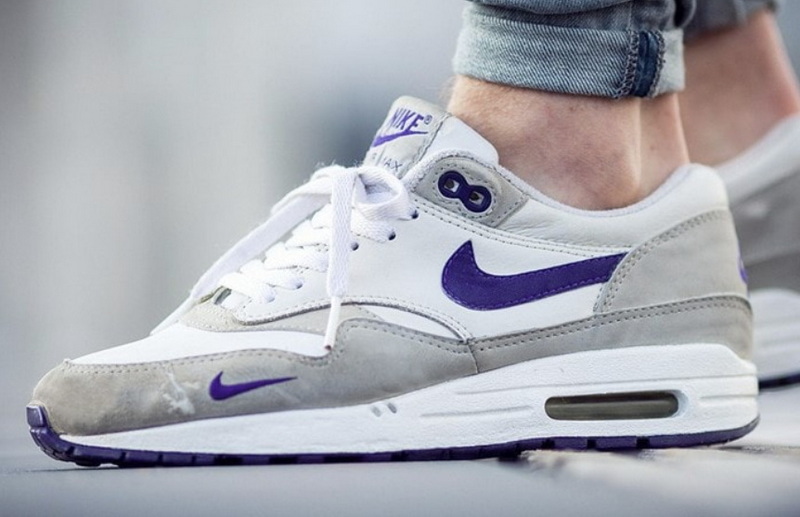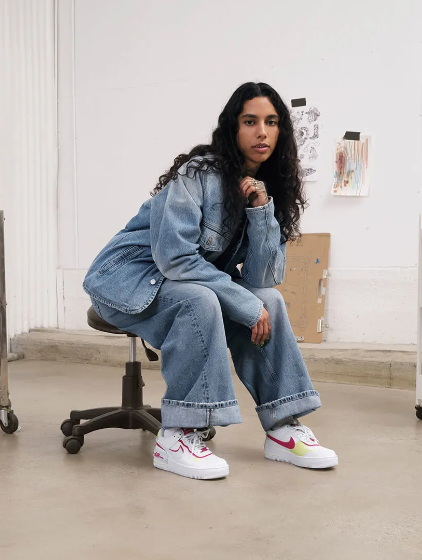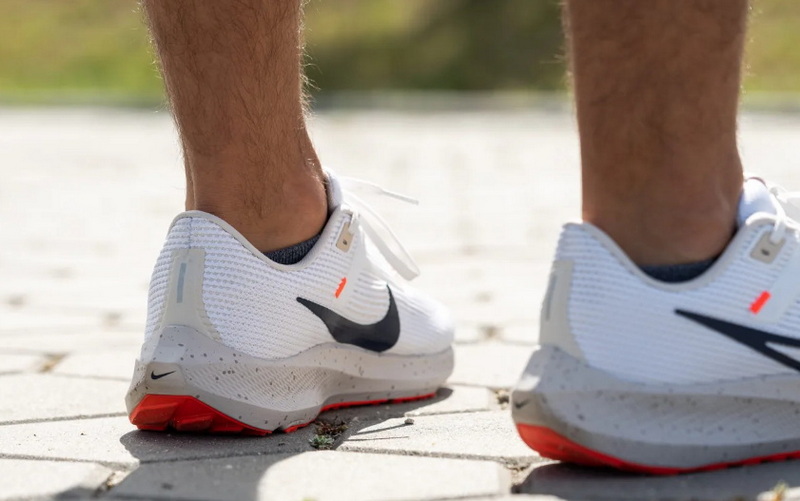Content Menu
● Introduction to Nike Shoes
● Key Differences Between Men's and Women's Nike Shoes
>> 1. Foot Shape and Structure
>> 2. Heel Size and Arch Support
>> 3. Cushioning and Support
>> 4. Shoe Width
>> 5. Flexibility and Weight
>> 6. Style and Aesthetics
>> 7. Performance Features
● Decoding the Product Code
● Can Men Wear Women's Nike Shoes?
● Are Women's Nike Shoes Cheaper?
● Nike's Approach to Gender-Neutral Designs
● Customization Options
● Sustainability Efforts
● Marketing Strategies
● Collaborations and Limited Editions
● Technology and Innovation
● Impact on Fashion Trends
● Conclusion
● FAQs
>> 1. What are the main differences between men's and women's Nike shoes?
>> 2. Can men wear women's Nike shoes?
>> 3. How do I identify if a Nike shoe is for men or women?
>> 4. Are women's Nike shoes cheaper than men's?
>> 5. Do Nike shoes have gender-neutral designs?
Nike shoes are renowned for their quality and style, appealing to both men and women. However, there are distinct differences between men's and women's Nike shoes, which are often overlooked. In this article, we will delve into the key differences and explore whether men's and women's Nike shoes are truly the same.

Introduction to Nike Shoes
Nike is one of the world's leading sports brands, offering a wide range of shoes for various activities and styles. From running shoes like the Nike Air Max and Nike Zoom, to casual wear like the Nike Air Force 1 and Nike Dunks, Nike caters to diverse tastes and needs. The brand's commitment to innovation and style has made it a favorite among athletes and fashion enthusiasts alike.
Key Differences Between Men's and Women's Nike Shoes
The primary differences between men's and women's Nike shoes are rooted in anatomy and design preferences.
1. Foot Shape and Structure
Women's feet tend to be narrower with a slimmer heel and a wider forefoot compared to men's feet, which are generally wider and bulkier. This anatomical difference influences the design of Nike shoes, with women's shoes featuring a narrower fit and men's shoes offering more width. For instance, the Nike Air Zoom Pegasus series is designed with a more flexible forefoot for women to accommodate their natural stride.
2. Heel Size and Arch Support
Women's Nike shoes often have a slightly higher heel arch to accommodate the more pronounced arch in women's feet. Men's shoes, on the other hand, have a flatter arch, providing even weight distribution across the sole. This difference in arch support is crucial for comfort and performance during activities like running or hiking.
3. Cushioning and Support
The cushioning technology in Nike shoes differs slightly between genders. Women's shoes typically have additional cushioning in the midsole and heel to support the different way women's feet strike the ground, ensuring comfort and reducing injury risk. For example, the Nike React series offers enhanced cushioning for women's running shoes, providing a softer landing and smoother transition.
4. Shoe Width
Nike uses standard width labels: "B" for women's shoes and "D" for men's shoes. This width difference is crucial for comfort and fit. Ensuring the right width can prevent discomfort and potential foot issues during prolonged wear.
5. Flexibility and Weight
Women's shoes are often lighter and more flexible than men's shoes, accommodating women's generally more agile movements. This flexibility is particularly beneficial in sports that require quick turns and rapid changes in direction.
6. Style and Aesthetics
While not always a hard rule, Nike tends to design women's shoes with softer color palettes and more stylish profiles. Men's shoes often feature more robust, darker colors, appealing to a different aesthetic preference. However, both men's and women's lines include a wide range of styles to cater to individual tastes.
7. Performance Features
Nike integrates gender-specific performance features into their shoes. For example, women's running shoes might have more flexibility in the midsole for natural foot flex, while men's shoes emphasize sturdier support for heavier impacts.

Decoding the Product Code
Each Nike shoe has a unique product code, known as the Nike Style Number or SKU, which can help identify whether the shoe is for men or women. A quick online search of this code will reveal the intended gender. This is particularly useful when shopping online or in stores where gender labels might not be clearly marked.
Can Men Wear Women's Nike Shoes?
Yes, men can wear women's Nike shoes, especially if they have narrower feet. However, sizing up by about 1.5 sizes is recommended to ensure a comfortable fit. This is a common practice among men with slimmer feet who prefer the style or fit of women's shoes.
Are Women's Nike Shoes Cheaper?
Sometimes, women's versions of Nike shoes can be cheaper than their men's counterparts, especially for similar models with different colorways. This price difference can be attributed to various factors, including marketing strategies and production costs.
Nike's Approach to Gender-Neutral Designs
In recent years, Nike has emphasized gender-neutral designs, offering shoes that appeal to all genders. Models like the Air Force 1 and Dunks are popular across gender lines due to their timeless style and versatility. This approach reflects a broader shift in the fashion industry towards inclusivity and flexibility in design.
Customization Options
Nike also offers customization options through its Nike By You platform, allowing consumers to personalize their shoes with various colors and designs. This feature allows both men and women to create unique styles that fit their personal preferences, blurring the lines between traditional gender-specific designs.
Sustainability Efforts
Nike has been focusing on sustainability in its shoe production, using recycled materials and reducing waste. This commitment to environmental responsibility is reflected in both men's and women's lines, ensuring that consumers can choose eco-friendly options regardless of gender.
Marketing Strategies
Nike employs different marketing strategies for men's and women's shoes, often targeting specific demographics and interests. For women, campaigns may focus on empowerment and fitness, while men's campaigns might emphasize performance and competition. These strategies help tailor the brand's message to resonate with different audiences.
Collaborations and Limited Editions
Nike frequently collaborates with artists, celebrities, and brands to create limited-edition shoes that appeal to both men and women. These collaborations often result in unique designs that transcend traditional gender boundaries, attracting a wide range of consumers.
Technology and Innovation
Nike continuously innovates in shoe technology, introducing features like Flyknit and Vaporfly, which are available in both men's and women's lines. These technologies enhance performance and comfort, making Nike shoes a favorite among athletes and casual wearers alike.
Impact on Fashion Trends
Nike shoes have a significant impact on fashion trends, with both men's and women's styles influencing streetwear and high fashion. The versatility of Nike shoes allows them to be styled in various ways, from casual to formal, making them a staple in many wardrobes.
Conclusion
In conclusion, while Nike shoes share many similarities, there are distinct differences between men's and women's designs. These differences are based on anatomical variations and aesthetic preferences. Whether you're a man or a woman, choosing the right Nike shoe depends on your foot shape, style preferences, and activity needs. Understanding these differences can help you find the perfect pair that combines comfort, performance, and style.

FAQs
1. What are the main differences between men's and women's Nike shoes?
- The main differences include foot shape, heel size, cushioning, shoe width, flexibility, and style. Women's shoes are narrower with a slimmer heel, while men's shoes are wider and bulkier.
2. Can men wear women's Nike shoes?
- Yes, men can wear women's Nike shoes, especially if they have narrower feet. It's recommended to size up by about 1.5 sizes.
3. How do I identify if a Nike shoe is for men or women?
- Check the label for the width ("B" for women, "D" for men) and the product code. You can also search the product code online to confirm the intended gender.
4. Are women's Nike shoes cheaper than men's?
- Sometimes, yes. Women's versions of certain Nike models can be cheaper, especially if they have unique colorways not available in men's sizes.
5. Do Nike shoes have gender-neutral designs?
- Yes, Nike offers many gender-neutral designs, such as the Air Force 1 and Dunks, which are popular across all genders.

















